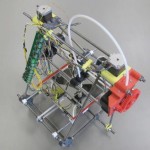 Students Jennifer Lind-Reihl, Shelly Jeltema, Margaret Morrison, and Gabriela Shirkey and SS faculty Audrey Mayer, Mark Rouleau, and Richelle Winkler published a paper, “Family legacies and community networks shape private forest management in the western Upper Peninsula of Michigan (USA)” in Land Use Policy.
Students Jennifer Lind-Reihl, Shelly Jeltema, Margaret Morrison, and Gabriela Shirkey and SS faculty Audrey Mayer, Mark Rouleau, and Richelle Winkler published a paper, “Family legacies and community networks shape private forest management in the western Upper Peninsula of Michigan (USA)” in Land Use Policy.
Abstract
Nonindustrial private forest (NIPF) owners make thousands of uncoordinated land use decisions that collectively and critically impact forest ecology. Prior research generally assumes private land use decisions adhere to the rational choice paradigm, driven primarily by cost–benefit calculations, such as financial considerations. Thus, when aiming to coordinate land use change in landscapes dominated by private property, policy makers often use economic or educational incentives to encourage enrollment in voluntary programs. Despite these incentives, enrollment in voluntary programs is notoriously low. The current study offers a possible explanation for this problem. It highlights the role of social influence in shaping NIPF land use decision-making. Our research draws on qualitative data gathered from interviews with 37 landowners in the western Upper Peninsula of Michigan, USA, to discover how social influence affects land management practices, such as decisions to join voluntary programs. We find evidence that family traditions, community relationships, and locally defined social norms play key roles in shaping the land use decision options available to individual landowners. Local norms against clear cutting and trust (or lack thereof) in local experts and organizations were found to be particularly important. We also found evidence of cognitive dissonance associated with conflict between Scandinavian versus American traditions of public access to private lands.
